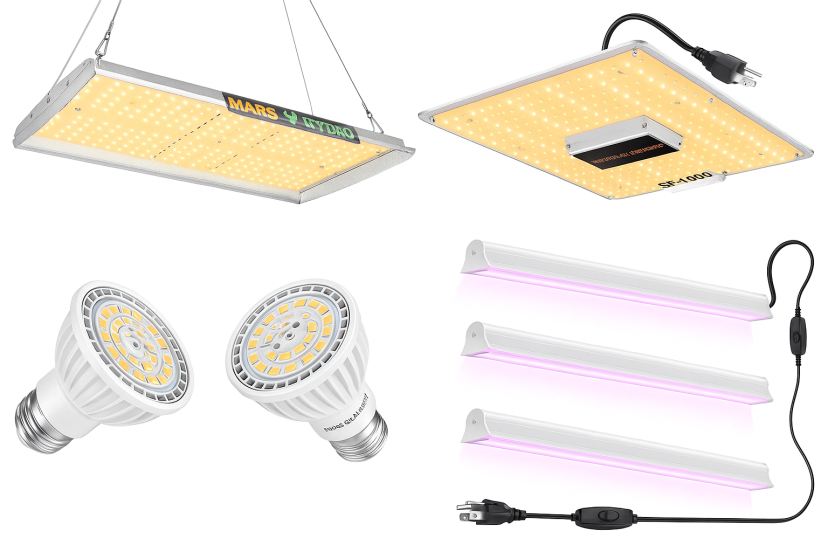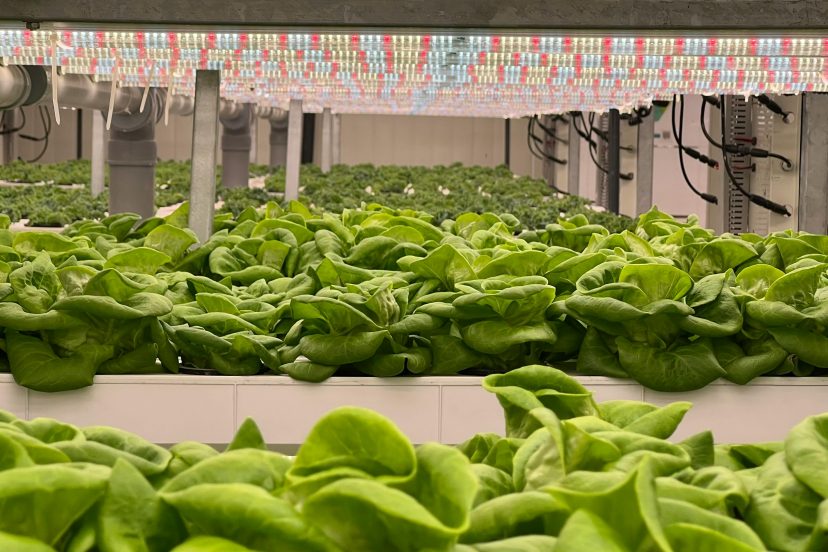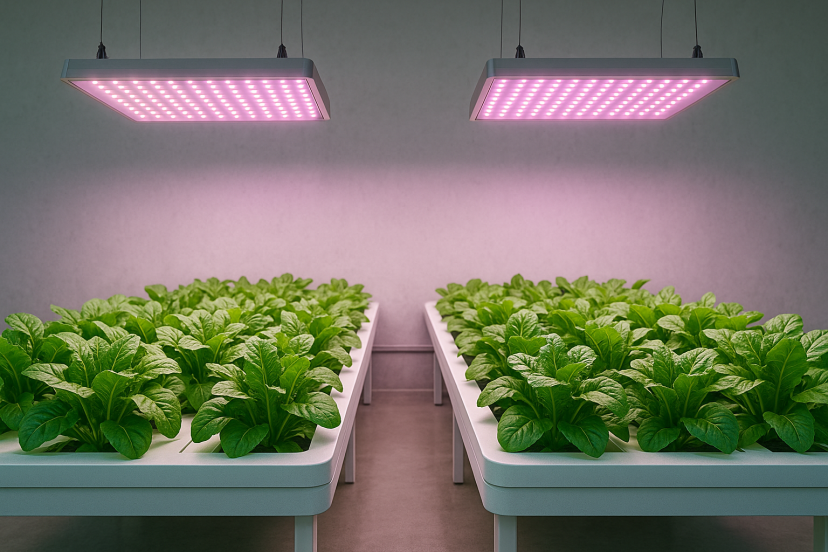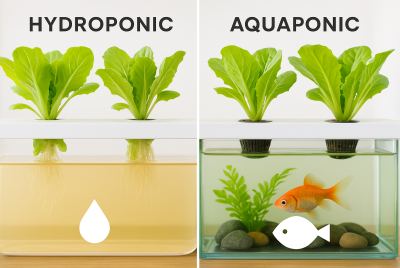The Best Hydroponic Grow Lights for Your Indoor Garden
We may earn a commission for purchases made using our links. Please see our disclosure for more details.
Hydroponic gardening has become one of the most efficient ways to grow plants indoors, allowing you to cultivate fresh herbs, vegetables, and flowers without soil. But at the heart of every thriving hydroponic setup lies one essential element — light. Since your plants can’t rely on sunlight, the right hydroponic grow lights provide the energy they need to photosynthesize, flourish, and produce abundant yields year-round. Choosing a quality lighting system can make the difference between slow, leggy growth and vibrant, nutrient-rich harvests. Let’s explore how the best hydroponic grow lights can help your indoor garden reach its full potential.
Why Choosing the Right Hydroponic Grow Lights Matters
In hydroponics, light isn’t optional — it’s the heartbeat of your indoor garden. Unlike outdoor setups that rely on the sun, indoor systems depend entirely on artificial lighting to drive photosynthesis and plant development.
The right hydroponic grow lights help you control growth cycles, nutrient absorption, and overall plant health. On the other hand, poor lighting choices lead to spindly plants, slow growth, and wasted energy.
Lighting plays a major role in your hydroponic success, just like nutrient timing and planting schedules discussed in the Fall Garden Vegetables Guide. Investing in quality lights means faster growth, healthier foliage, and bigger yields.
What to Look For in Hydroponic Grow Lights
Light Spectrum (Red, Blue & Full-Spectrum)
The color spectrum influences how plants grow.
- Blue light promotes compact leaves and chlorophyll production.
- Red light encourages flowering and fruiting.
- Full-spectrum LEDs combine these wavelengths and mimic natural sunlight for year-round results.
Research supports this approach. A 2024 review in Frontiers in Plant Science found that red-blue LED combinations improved biomass and nutrient density in leafy greens. Full-spectrum setups can further enhance morphological balance and flavor quality.
Intensity (PPFD and Wattage)
The brightness of your grow lights—measured in PPFD (Photosynthetic Photon Flux Density)—indicates how much light energy your plants actually absorb for growth. Leafy greens thrive around 200–400 µmol m² s-¹, while fruiting crops need 600–900 µmol m² s-¹.
Choose lights that match your crop type and space. For example, herbs and lettuce grow well under 25–40 watts per square foot. Studies confirm that increasing LED intensity (within safe limits) boosts dry weight and antioxidant levels in hydroponic crops.
Coverage Area & Heat Efficiency
Coverage is often overlooked but crucial. Ensure the fixture spreads light evenly across your grow tray or rack. Modern LED grow lights are energy-efficient and emit minimal heat — allowing closer placement to plants without leaf burn.
If your hydroponic system sits in a small room or tent, look for lights with built-in cooling or aluminum housings that dissipate heat effectively.

Top 5 Best Hydroponic Grow Lights
1. MARS HYDRO TSL 2000 LED Grow Light
The MARS HYDRO TSL 2000 is a powerhouse for large hydroponic setups. With 300 watts of full-spectrum output (red, blue, IR, and white), it provides strong light penetration and uniform coverage for leafy greens, herbs, and fruiting vegetables. Its reflective hood design ensures every inch of your growing area gets consistent illumination while minimizing wasted light. The dimmable feature lets you control intensity at different growth stages, and the low-heat design makes it energy-efficient for longer use. This model is ideal for growers who want professional-grade performance in a compact yet powerful package.
2. Spider Farmer SF-1000 Full Spectrum LED Grow Light
Perfect for small to mid-sized hydroponic gardens, the Spider Farmer SF-1000 is equipped with Samsung LM301B diodes that deliver high output with minimal energy consumption. This 100-watt light runs silently thanks to its fanless design and aluminum heat sink, which disperses heat efficiently. The SF-1000 covers about 2×2 feet, making it a great match for smaller grow tents or vertical shelves. Its dimmable driver allows easy brightness adjustments, and the full-spectrum blend promotes both vegetative and flowering growth. Overall, it’s an excellent entry point for hobbyists seeking consistent results without excessive power draw.
3. SANSI Full Spectrum LED Grow Light Bulb (36W)
The SANSI 36W Full Spectrum LED Bulb is a budget-friendly option that works well for herbs, seedlings, and compact hydroponic trays. Each bulb provides a balanced light spectrum between 380–780 nm, effectively mimicking sunlight. With its E27 screw base, you can simply plug it into standard fixtures — no special installation required. The bulb’s ceramic heat sink design prevents overheating and extends lifespan, ensuring steady performance for months on end. It’s perfect for beginners who want an affordable way to start indoor hydroponics or expand smaller systems with flexible lighting options.
4. LetPot Smart Full Spectrum Grow Light
If you love automation and smart gardening, the LetPot Smart Full Spectrum Grow Light is the most innovative pick on the list. Offering up to 40 watts of adjustable lighting, this model allows you to control brightness, color temperature, and photoperiod directly from a mobile app. It’s designed for modern indoor gardens, complete with height adjustment and scheduling features that mimic natural sunrise and sunset patterns. Its RGB full-spectrum coverage supports all stages of growth — from germination to flowering — making it ideal for tech-savvy hydroponic enthusiasts who value precision and convenience.
5. Barrina T8 LED Grow Light (4-Pack)
For growers managing multi-tier or vertical hydroponic systems, the Barrina T8 LED Grow Light Pack is a versatile and scalable solution. Each pack includes four 24-watt tubes (96 watts total), which can be linked end-to-end for expanded coverage. The white and pink full-spectrum blend provides an ideal balance between brightness and plant-focused wavelengths. These lightweight fixtures are easy to install under shelves or along walls, perfect for microgreens or small vegetable setups. Their low heat output also reduces the need for extra ventilation — making them energy-efficient, space-saving, and ideal for continuous operation.
Product Comparison Table
| Product | Wattage | Coverage | Light Spectrum | Key Features | Best For |
| MARS HYDRO TSL 2000 | 300 W | 2 × 4 ft | Full Spectrum (Red, Blue, IR, White) | Dimmable, reflective hood, low heat | Large grow racks and vegetable crops |
| Spider Farmer SF-1000 | 100 W | 2 × 2 ft | Samsung LM301B + Red | Dimmable driver, fanless cooling | Beginners and small hydro setups |
| SANSI Full Spectrum Bulb (36W) | 36 W | 2 ft radius | 380–780 nm Full Spectrum | Plug-and-play bulb, ceramic heat sink | Countertop herbs and microgreens |
| LetPot Smart Grow Light | 40 W | 1 × 2 ft | Adjustable RGB Full Spectrum | App control, timer, height adjustment | Automated or tech-savvy gardens |
| Barrina T8 LED Light (4-Pack) | 96 W total | Modular racks | White + Pink Full Spectrum | Linkable design, low heat output | Vertical or multi-tier hydroponics |

How Hydroponic Grow Lights Work
Hydroponic grow lights are designed to replace natural sunlight by providing the specific wavelengths plants need for photosynthesis. In indoor systems, these lights emit energy within the Photosynthetically Active Radiation (PAR) range — typically between 400 and 700 nanometers — which drives chlorophyll production and plant metabolism. Unlike traditional gardening, where sunlight exposure is variable, hydroponic lighting gives growers precise control over intensity, duration, and spectrum to optimize plant growth at every stage.
Recent research has shown that the quality of light plays an even greater role than previously thought. A 2024 study published in Frontiers in Plant Science revealed that reducing the proportion of red wavelengths in full-spectrum LED lighting enhanced biomass and overall productivity in hydroponically cultivated strawberries, suggesting that finely tuned light ratios can improve photosynthetic performance and fruit quality. This finding underscores how spectrum balance — not just brightness — directly influences plant morphology and yield.
Moreover, the shift from older high-pressure sodium systems to LED technology has marked a turning point in indoor horticulture. According to a comparison review from JumpLights, LED grow lights are significantly more energy-efficient than HPS fixtures, producing greater light output per watt while generating less heat. This efficiency allows growers to position lights closer to plants without risking heat stress, ultimately achieving higher yields with lower operating costs.
In essence, modern LED hydroponic grow lights don’t just replicate sunlight — they refine it. By combining targeted wavelengths with superior efficiency, they create an ideal environment for robust, energy-efficient plant growth, all while helping hydroponic gardeners maintain consistent and sustainable results year-round.

Installation & Setup Tips
- Measure your grow area – Ensure light coverage matches tray or rack dimensions.
- Adjust the hanging height – Keep LEDs 12–24 inches above plants; lower gradually as plants grow.
- Set proper photoperiods – 12–16 hours of light works for most hydroponic vegetables.
- Monitor heat and airflow – Maintain temperatures between 20–26 °C for stable nutrient uptake.
- Use timers or smart plugs – Consistency is key; automation helps maintain a balanced light schedule.
Maintenance & Long-Term Care
- Clean panels monthly to remove dust buildup.
- Check for flickering or dimming — signs of diode wear.
- Keep drivers and power units ventilated.
- Replace older fixtures after 3–5 years to maintain light efficiency.
- Monitor your plant response and adjust hanging height or photoperiod as needed.
Conclusion
Selecting the best hydroponic grow lights transforms your indoor garden from average to thriving. When you balance light intensity, coverage, and spectrum, your plants reward you with stronger growth and nutrient-rich harvests. Whether you choose a budget-friendly bulb or a professional-grade panel, investing in the right lighting ensures consistent results and faster yields. Set up your lights, tune your schedule, and let your hydroponic garden flourish under the perfect glow.
FAQs
1. How long should hydroponic grow lights stay on each day?
Most hydroponic plants perform best with 12 to 16 hours of consistent light daily, followed by a dark period to allow proper respiration and recovery.
2. Do I need full-spectrum lights?
Yes, full-spectrum lights simulate natural sunlight and support all growth stages — from seedling to flowering.
3. How close should your hydroponic lights hang above your plants?
Keep LEDs 18–24 inches above your canopy and lower gradually as plants mature.
4. Can stronger lights guarantee higher yields?
Not necessarily. Overexposure causes stress and nutrient imbalance. Match wattage and spectrum to your crop type.
5. Why are my hydroponic plants pale or leggy?
That usually signals insufficient light intensity or wrong wavelength balance. Lower your fixture slightly or upgrade to a higher-output LED model.




